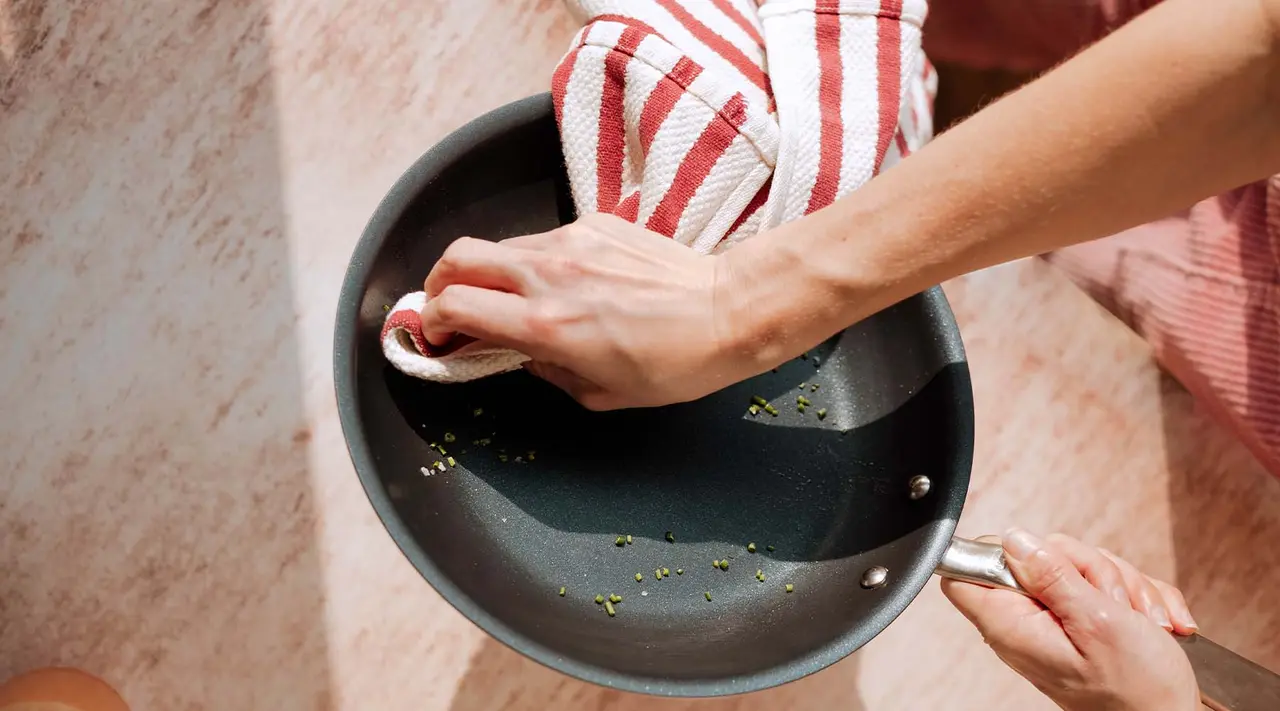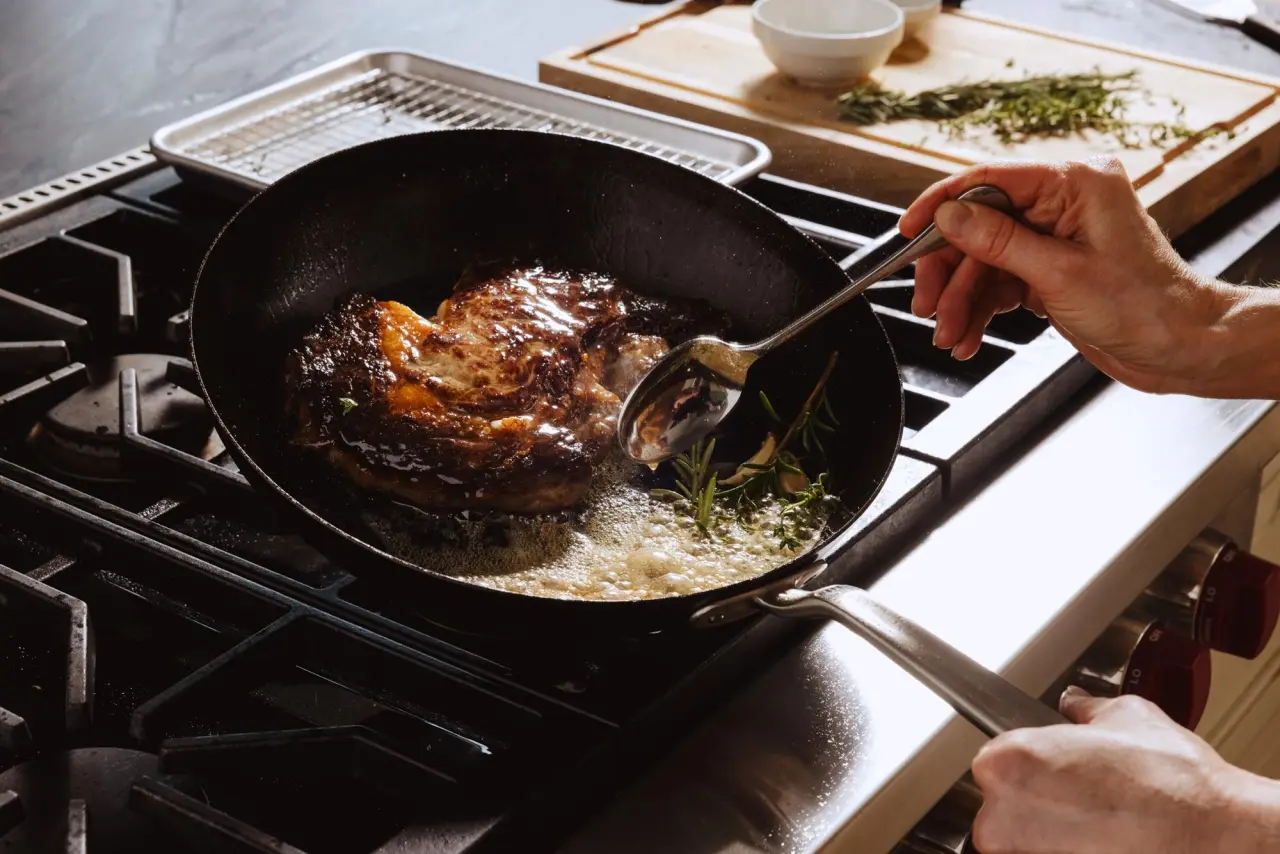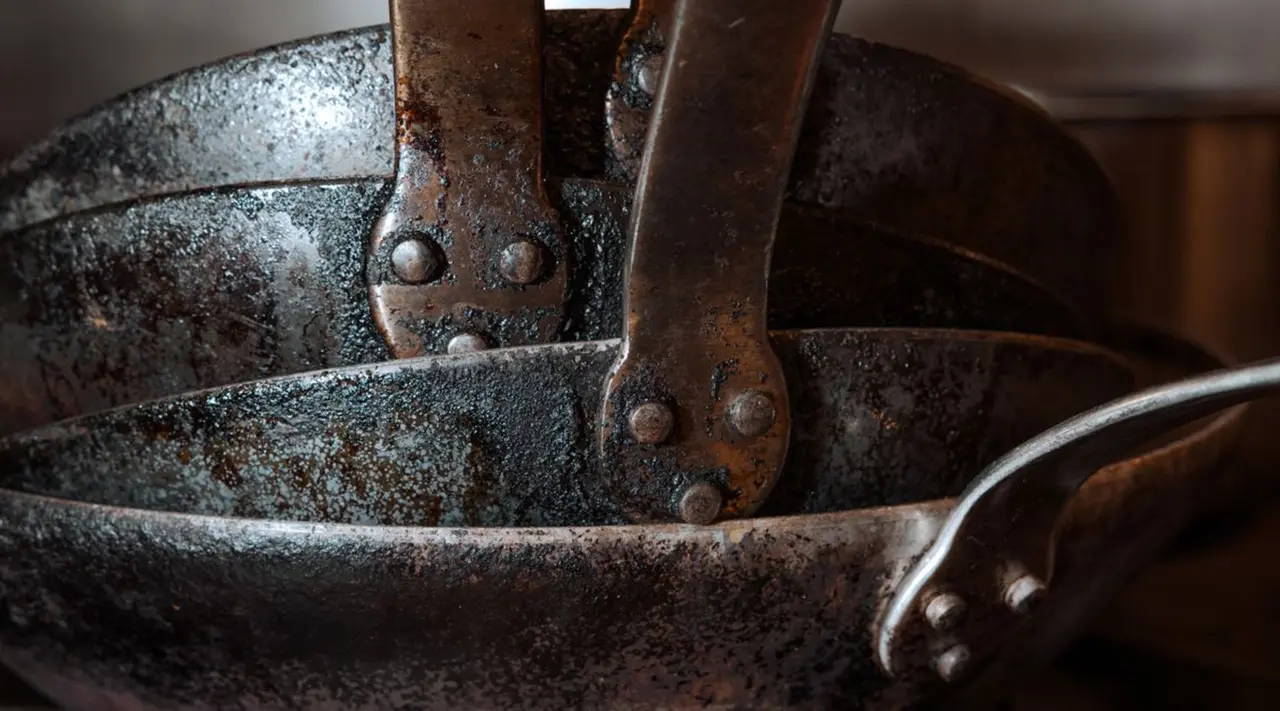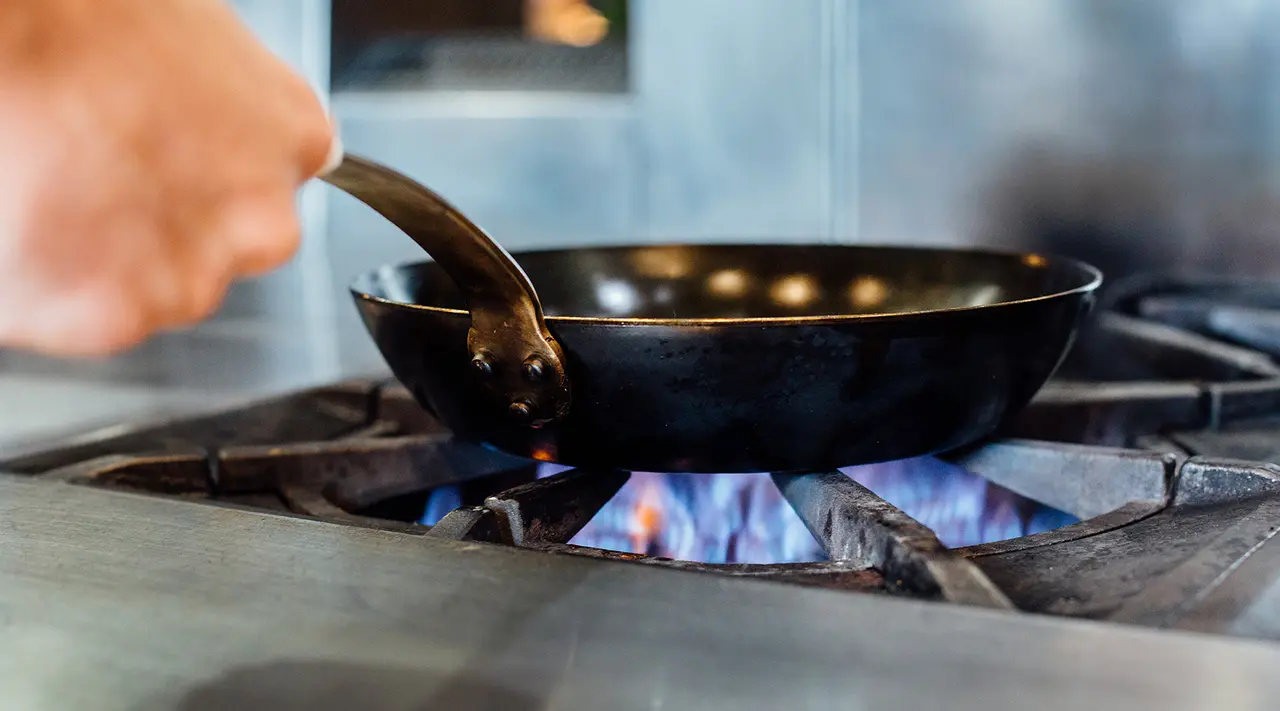Non stick pans are a popular option for those looking for easy cleanup or a stick-free cooking surface. But even non stick cookware has its limits—no cookware is immune to burnt-on messes.
For those facing this scenario now—don’t worry, we’ve all been there. Our team put together a guide to cleaning a burnt non stick pan, so that you can restore your pan to its former easy-to-use glory.
Why Does Non Stick Burn?
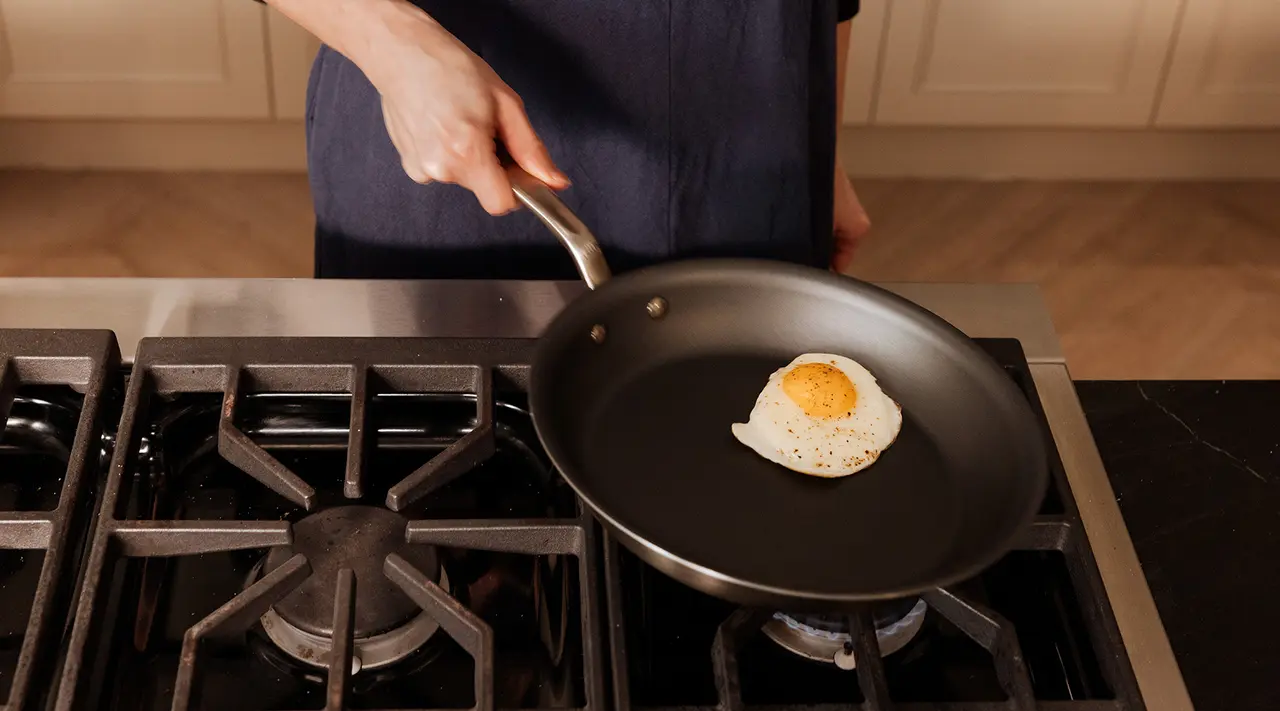
There are two ways non stick pans can get burnt: dry heating and overheating.
- Dry heating occurs when you heat your non stick pan for extended periods of time with nothing in it. To avoid dry heating, always add cooking fat or other ingredients to your pan before turning the heat on.
- Overheating occurs when you leave your non stick cookware over very high heat for too long. To protect and preserve your pan’s non stick surface, treat it gently and don't blast it with heat for long periods of time. We recommend cooking over medium-high heat, maximum—our ProCoat line is oven safe up to 500F, but should rarely need to be heated to that temperature.
Our ProCoat Non Stick Collection features an Award-Winning Stainless Clad core, meaning it offers a superior sear, even at lower temperatures.
How to Clean a Burnt Non Stick Pan
Once you’ve made the unfortunate discovery that you’ve burned the bottom or cooking surface of your pan (and your food), give the following tried-and-true methods a shot.
Method One: Soap and Water
The first way to restore a burnt pan is to simply wash the surface of your non stick pan with dish soap, hot water, and a dish sponge.
Step 1: Rinse
If food has been burnt on the surface of your pan, it’s likely dried out. As anyone who’s ever done the dishes knows, it’s impossible to clean when pieces of food have hardened on any surface. Simply letting the pan soak in hot water can help solve this issue.
Step 2: Soap
Once the pan has soaked and the burnt spot has been rehydrated, dump the water and add dish soap to both your dish sponge and the pan. The dish soap will help break down oil, grease, and pieces of burnt food.
Step 3: Sponge
Using the rough side of your dish sponge, scrub the burnt areas of your pan clean. Steer clear of anything more abrasive, like chain mail, steel wool, or heavy-duty scrubbing brushes—these can scratch and damage the delicate coating on your pan.
Method Two: Vinegar and Baking Soda
If your non stick pan is visibly charred, a mixture of white vinegar, water, and baking soda should help loosen and remove any black residue.
Step 1: Create the Mixture
Create a slurry of white vinegar, water, and baking soda directly in your non stick pan. Pour enough water to cover the bottom of the pan, along with a 1:1 ratio each of both white vinegar and baking soda (we like to use 2 tablespoons).
Step 2: Boil
Bring the above mixture to a boil and stir to dissolve using a silicone or wooden spoon. Continue stirring for 5 minutes to encourage any burnt residue to loosen.
Step 3: Sponge
Allow the mixture to cool completely after boiling. Discard vinegar solution and rinse the pan with warm water and continue with steps two and three of the first method, above.
Still Stuck?
If you’ve tried both methods of cleaning and the burnt food or residue still remains stuck to the surface of your pan, it may be time to replace it. Once the non stick coating of the pan has started to break down, it will only continue to do so, making it easier and easier for food to stick to its surface. In some cases, the non stick coating may also begin to flake off during cooking.
Additional Non Stick Care Tips
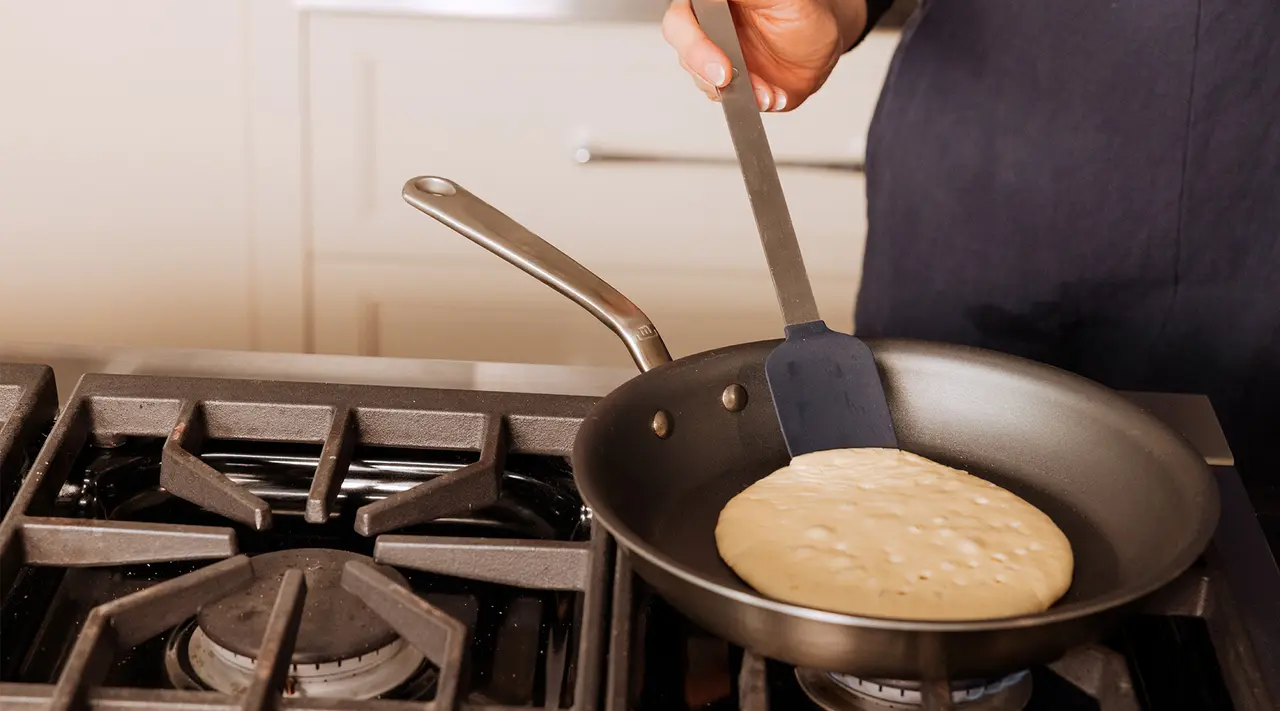
While non stick pans win many over with their easy-to-clean coating, they can be delicate compared to more heavy-duty pieces of cookware like carbon steel or cast iron. The following non stick maintenance tips should help to keep your non stick pan in tip top shape for the long run.
Tip 1: Use Low Heat
The primary reason that food burns is because it was cooked on high heat. While many new home cooks turn their stoves to high heat because it seems more efficient, it often leads to burnt, overcooked food (and cookware). Fortunately, high-quality non stick pans, like our ProCoat Collection, are capable of doing more with less heat.
Tip 2: Avoid Metal Utensils
We love metal spatulas, whisks, and spoons, but not while using non stick. Metal utensils have sharp edges with the potential to scrape the non stick coating off, so we recommend sticking with wood or other non stick-friendly utensils.
Tip 3: Keep Watch
Not just for non stick pans, but a good rule of thumb regardless of what cookware you’re using is to watch your food the entire time it’s cooking. While it can be tempting to leave your meal on the stove unattended for just one second, resist the urge as it only takes a minute or two for your dish to go from perfectly seared to a smoky mess.
Ready to Cook?
If you find yourself with a burnt non stick pan, one of the two methods above should allow you to restore it to its original condition. However, if you find yourself in need of a replacement pan, be sure to take a look at our collection of high-performance ProCoat Non Stick Cookware, featuring a durable, easy-to-clean coating and Award-Winning 5-Ply Stainless Clad construction.
